Updated: 29-Jan-2020
"Benz & Cie." (Rheinische Automobil und Motorenfabrik AG), in Manheim, was founded in 1885 by Karl F. Benz, dedicated initially to the automotive industry. The first car was a tricycle with a horizontal, single cylinder engine at the rear.
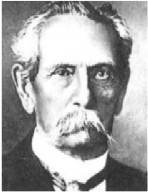
"Karl Benz"

"Benz logo"
-Already in 1909, his 100 hp, 4-cylinder engines were mounted on airships. For the "Kaiserpreiss Wettbewerb" Award 1913, Benz presented the FX type and won.

"Benz FX / BzII"
-Before and after the FX model they made other engines like the FB, FD or FF.
-The FB had six cylinders and gave 85/88 CV, reaching 95 hp at 1,350 rpm.
-The magnetos were also from Benz and the cylinders were displaced at 18 mm relative to the crankshaft.
-The FD had six upright cylinders that were water cooled. The engine delivered 115 CV at 1,350 rpm.

"Benz FF"
-The FF inline six-cylinder engine produced 160 hp and in this diagram we see the misalignment of the cylinders. It had two Benz carburetors and two Bosch magnetos.

"Benz BzII, 100 CV"
-Returning to the BzII, it delivered 100 CV with four individual cylinders, and gave 103 CV at 1,288 rpm and 105 CV at 1,300 rpm.
-This engine weighed about 300 Kg, with other words 3 Kg per CV. Soon this would reach 1 Kg. per CV. An interesting point is the position of the oil inlet to the crankcase. The dimensions of each cylinder were 130 x 180 mm.
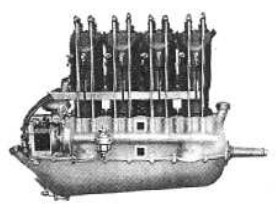
"Benz BzII, de 100 CV"
-The six-cylinder BXI from 1914 had higher compression and gave 160 hp at 1,400 rpm.
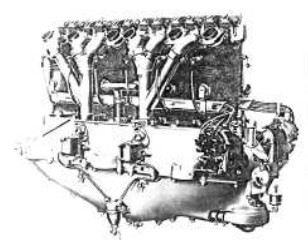
"Benz BzIII"

"Benz BzIIIa"
-The 180 CV Benz B IIIa was the first mass-produced engine during WWI. And it continued evolving up to 195 CV with cylinder measurements of 145 x 190 mm.

"Benz 195 CV"

"Benz 200 CV
-There was the BZIIIaV, used in the latter part of the war by the Germans, which passed the 200 CV, being able to give 239 CV at 1,600 rpm. Not all BzIII had six cylinders in line, as the BzIIIBV was an 8-cylinder V engine with a 90° angle between cylinder rows. This engine delivered 275 CV at 2,000 rpm.
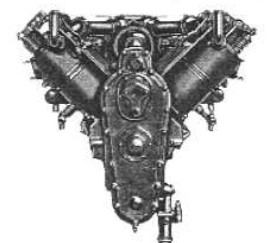
"Benz BzIIIBV"
-Another view of the 230 CV, with covers to control the air passing through the transverse holes in the crankcase.
-Here we have a rear view of this engine. The engine's cooling water weighed 22 lbs.
-The BzIV was from 1917 and although it was said to have 200 CV, it reached 275 CV at high revolutions.
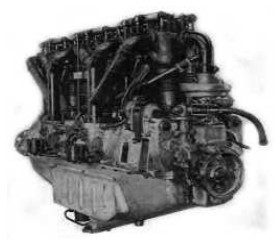
"Benz BzIV, 230 CV"
-The 230 CV was also mass produced. These Benz engines generally had two camshafts, one on each side of the engine, and each camshaft was actuating on two valves in each cylinder, as it had four valves per cylinder head.
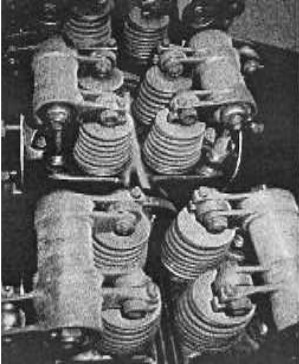
"4 valves per cylinder"
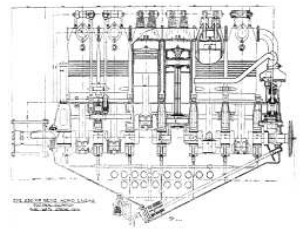
"Benz 230 CV cross section"
-A curious thing is the location of the lubrication pump at the crankcase bottom, inclined and being driven by quite a long shaft, which is rotating from the rear of the engine.
-The Benz 275 CV BzIV had six vertical upright cylinders with a piston diameter of 145 mm and a stroke of 190 mm. The compression ratio was 5.8 and the 275 CV was obtained at 1,500 rpm. It weighed 390 Kg. It had double ignition and therefore two magnetos, two carburetors, and two exhaust and two intake valves per cylinder.
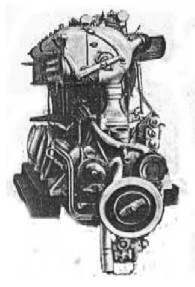
"Benz BzIV, 275 CV"
-Returning to the V engines, another view of the BzIIIB, just as they expose it at the "Politecnico di Torino".
-It is wonderful to see it so well-preserved in the XXI century.
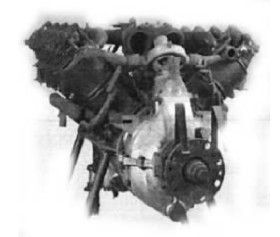
"Benz BzIIIB"
-In 1915, already existed the benz V8 version known as the "DV" with gear, 12 cylinders and producing 180 kW at 1,400 rpm.
-Like the BzV, the BzVB was a 12-cylinder engine with the V at 60°, with an epicyclic gearbox to the propeller. It delivered a power of 400 CV at 2000 rpm.
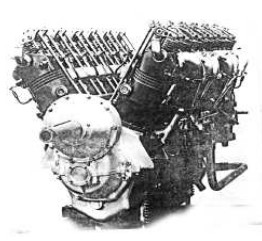
"Benz DV"
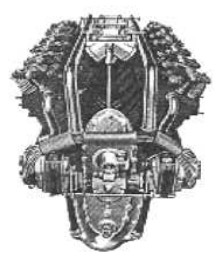
"Benz V"
-The engines that followed in power were the 500 CV ones, the Bz-VI and Bz-VI.V models, including this latter one even surpassed them. They were 12-cylinder V engines.
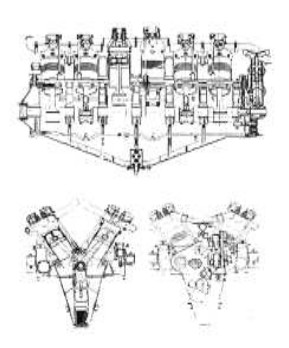
"Benz-VI"
-After the Armistice, Benz returned to the automotive industry and in 1926, Daimler and Benz merge to form Daimler-Benz (see).
-Regarding the Benz Bz-4 inline, six-cylinder engine that gave 230 CV, it is said to have been used in a Zeppelin.
-The cylinder measurements were 145 mm diameter and 190 mm stroke. It was from the year 1915.
-We insert an image that shows the bottom of the oil pan in which we see the crossing air passages that act as an oil cooler.
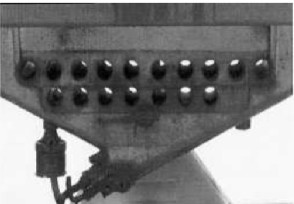
"Crossing air passages in the oil pan"
-This Illustration of a Bz3bV shows that their cylinders were individual.
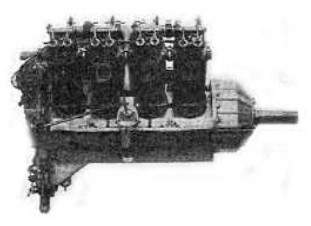
"Benz Bz3bV"
-There appears this engine with an important gear box

"Benz Bz3bV, front view"
-Below a new rear view of the Benz Bz5b.
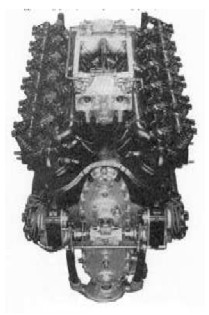
"Benz Bz5b"
-The Bz5 delivered around 450 CV at 1,700 rpm. It had a gear box and the propeller rotated at 985 rpm, which was almost half the engine rpm. It had 12 cylinders in V at 60°.
-Another engine of which we have a new illustration is the Benz 6V, a rear view though. It had 12 cylinders in V and delivered 675 CV at 1,600 rpm.
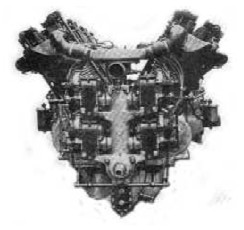
"Benz 6V"
-Another Benz (possibly Mercedes-Benz) is the one with 8 cylinders in V that gave 235/250 CV at 1,900 rpm.
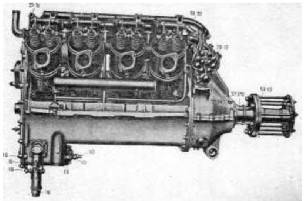
"Benz 235/250 CV"
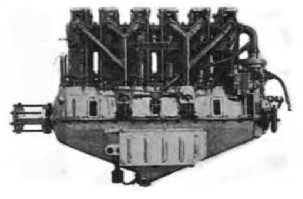
"Benz 230 CV"
-Benz engine with controllable cooling oil inlets.
From appendixes 6 and 7: Benz y Cie. from Mannheim built more than 6500 Benz Bz4S engines between 1914 and 1916.
-With typical German manufacturing, mounting individual cylinders fixed to the crankcase.
-These engines were installed in second-line aircraft such as reconnaissance, bombers, patrol, etc. It is a 1914 model. The "S" variant is not mentioned in the main text.
-The one in the photo below is exposed at the NASM. It has six cylinders, and produced a power of 275 CV at 1,500 rpm.
-Like other engines of this museum, it is mangled, lacking magneto, carburetor, spark plugs and cables, rods, rocker arms and refrigerant lines.

"Benz Bz4S"
-At the beginning of the previous century, by 1910, the Emperor of Germany instituted a prize equivalent to $ 10,000 to the best aircraft engine that would be presented.
-Benz presented his 100 CV, FX/BzII model. See main text. And he won with it.

"The winner Benz"
From appendix 7: At the "Deutsches Museum" in Munich we find a Benz IIIBV (the plate shows 3BV).
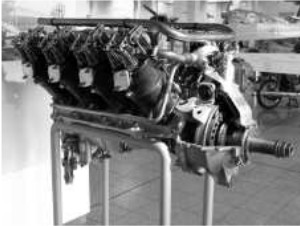
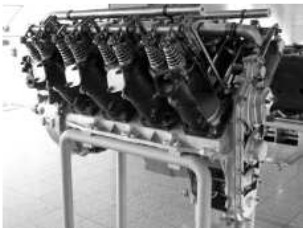
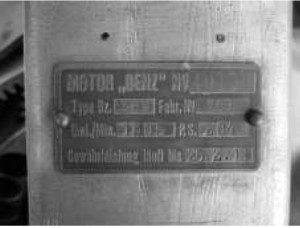
“Two 3BV views and its engine plate”
-At the Museum of Stuttgart there hangs a Kaiser-prize winner Benz engine that is mentioned in the main text.
-It is the FX, identified as number 105, maybe for the power, as it is known for 100 CV.

"Benz FX, 105"
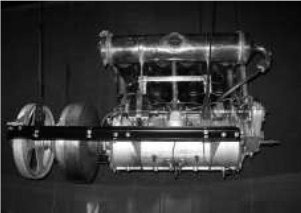
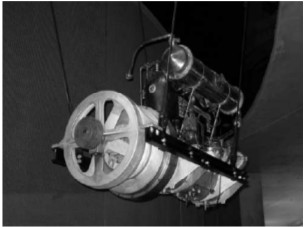
"Benz J4LW"
From appendix 9: In the early nineteenth century Benz & Cie. won the Kaiser Award for an aircraft engine.
-This is already mentioned in the main text, but now we can add the brand's poster that communicates it to the public.
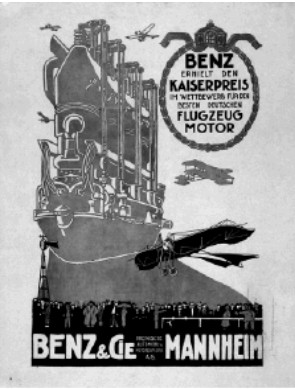
From appendix 9:"The Benz Kaiser Prize poster"
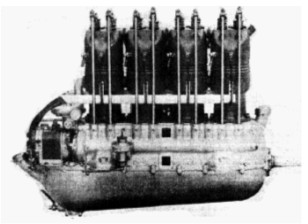
"The prized Benz engine, 100 CV"

"100 CV engine, enlarged rear view"
Engines of BENZ
Model: .Fx, FB, FD, FF

"Benz FX, 105"
Model: BZ.4S

"Benz Bz4S"
Model: BZ.DV

"Benz DV"
Model: Bz.II (Fx), 100 CV

"Benz BzII, 100 CV"
Model: Bz.III

"Benz BzIII"
Model: Bz.IIIA, IIIAV

"Benz BzIIIa"
Model: Bz.IIIB, BV (3BV, a veces)

"Benz 3BV,"
Model: Bz.IV, IVa

"Benz BzIV, 275 CV"
Model: Bz.V, V.B (5B a veces)

"Benz Bz5b"
Model: Bz.VI.V (6V a veces)

"Benz 6V"
Model: J4L

"Benz J4L"


